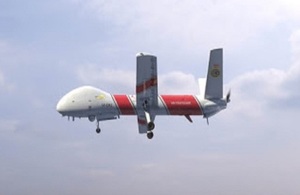Drones could form key part of next generation of UK search and rescue
From accidents off the rugged cliffs of the Atlantic coast to casualties in the high waves of the North Sea, drones could be used in the future to help save lives across the UK.

A new project will investigate if drones could also boost missions by visiting rescue sites ahead of air, sea or land based recovery teams; by providing a full picture of the situation and helping to develop the appropriate response.
Announced Wednesday 5 February by the Maritime & Coastguard Agency (MCA), the project will explore how current regulation can be developed to unlock the potential for drones to help those in distress on the UK’s coastline, making rescues safer and more efficient.
Maritime Minister Nusrat Ghani said: “Drone technology has enormous potential for our search and rescue teams, who save lives 24 hours a day, seven days a week.
“This ground-breaking project will not only hope to boost the capabilities of our already fantastic teams but will also boost our ability to spot pollution hazards and protect our precious marine environment.”
Last year alone, the MCA’s civilian search and rescue helicopters responded to seven missions a day on average, saving more than 1,600 people. In total, the MCA coordinated over 22,000 incidents and rescued over 7,000 people.
Phil Hanson, aviation technical assurance manager at the Maritime & Coastguard Agency, said: “I am extremely proud and excited that the MCA has taken the brave step to take the lead in the development and implementation of beyond visual line of sight (BVLOS) drones in UK airspace.
“The use of drones in search and rescue, counter pollution and maritime aerial observation operations will potentially increase overall efficiency and also reduce the risk to our personnel – allowing the MCA to discharge its international obligations effectively.”